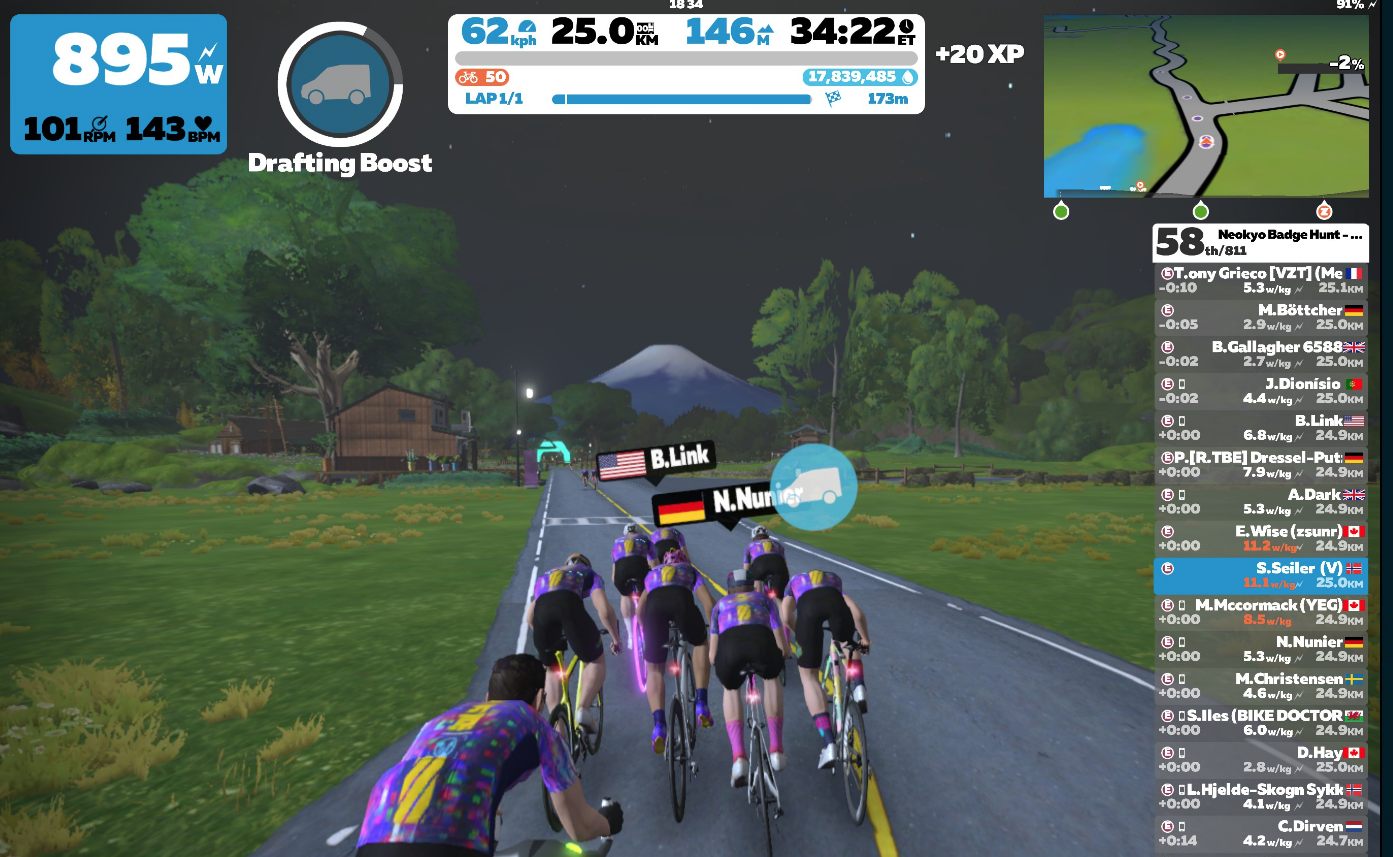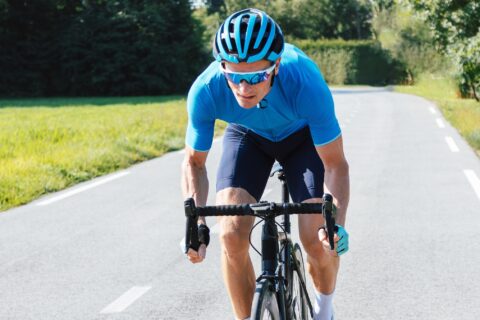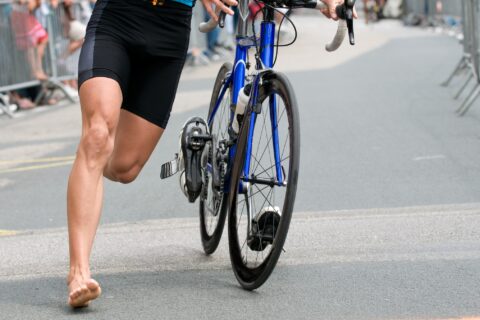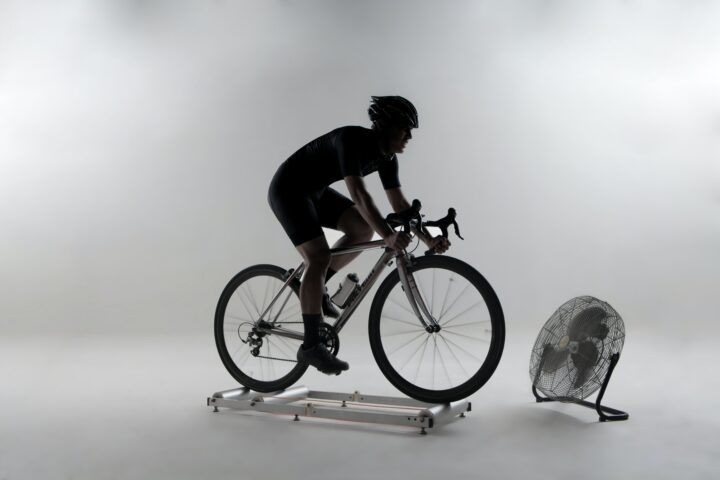Despite Zwift’s continuous tweaking, racing on the virtual platform is not the same as racing out in the real world. And that’s okay; but if you’re looking to win races or simply improve your performance, there are several skills you need to learn.
After all, you train with the singular purpose of improving your physiology to, in turn, improve your performance. But when you’re racing smart competitors, race tactics—not physiology—often determine who rides to glory and who’s left to think about what went wrong.
In that regard, Zwift is exactly like the real world: intelligent racing is the key to success.
In this article we’ll discuss five Zwift-specific race tactics. You’ll learn how to:
- Moderate your effort
- Evaluate attacks
- Master pack dynamics
- Know your limits
- Outride your weaknesses
Use these tactics to turn your hard work into success. You’ve spent so much time and effort preparing, now it’s time to “play the game.”
How to moderate your effort
Avoid “burning matches”—digging into your anaerobic capacity—to preserve a finite resource for when it’s needed most. To do that:
Use course knowledge
- Know the course before starting the race to avoid any in-race confusion. Be aware of where and which course features will best suit your plan of attack.
- Be aware of when riders are most likely to go hard. Anticipate a surge in power from the group on climbs and on the finish straight.
- Use your historical knowledge of how previous races have played out; they often repeat themselves.
Master “The Slide”
- Just before an upcoming surge, steadily move forward through the pack.
- As the surge begins, maintain a steady effort and let surging riders move past you.
- Lift your pace gradually, as needed, to ensure you remain in the pack until the end of the harder effort.
How to evaluate attacks
Because Zwift limits fields based on rider performance, there’s often little variation in ability at the front of the field. This makes it difficult for attacks to stick, but in certain conditions they’re more likely than others.
When it comes to attacks, being able to predict what others will do and knowing the best time to put in your own surge, are key to success. To do that:
- Be patient during known surge points. Racers will often jockey for position during or near short steep climbs, sprint primes, and other key points.
- Be patient if only one rider goes up the road; they’re unlikely to survive off the front.
- Be watchful on the front if two or three riders begin to gap the field, as they may be able to make it stick.
- Be ready to bridge immediately if the group begins to split; the front group is likely to stay away.
- Attacks at opportunistic times are more likely to stay away. Be ready for them, or use them to your advantage.
- Be ready for them on long or steep climbs where riders are not able to hide in the group.
- Watch for attacks that come a good distance from a climb; you can use the hard moment to break the will of the chasers and solidify the gap.
- Be willing to attack at unexpected times, such as during a re-grouping after a climb or prime. This is especially effective if combined with (ii) above.
How to master pack dynamics
In the Zwift universe, the laws of physics and pack dynamics are vastly different from the real world. It’s due to Zwift’s algorithm, which tries to group riders going similar speeds. This can have a large effect on your positioning in relation to other riders.
Here’s what to do:
- Test the minimum workload needed to stay in the group. Slowly lower your effort to test how “sticky” the draft is.
- Signal to the game that you want to move forward with a short burst of effort followed by a steady pace to prevent you from sticking to the riders around you.
- When attacking in a smaller group, it can be useful to drop back to break the bond. When you launch your attack, you’ll sail past the group and into clean air.
- Hide in higher groups if riding in a mixed-category race. Because of the draft, lower-level riders can often hang with stronger groups. Get into a faster group at the start of the race and then try to maintain that position as your actual race group drifts into the rear-view mirror.
- Monitor the rider list:
- Sudden increases in workload can indicate a mounting attack.
- Compare your workload to groups in front and behind to know how the race is evolving.
- Look for trends that may indicate a rider’s future intention: Someone consistently driving the pace on every climb may feel strong where someone consistently yo-yoing may be struggling.
Know your limits
Hope is not a strategy and unrealistic efforts often lead to epic failures. Here’s how to understand your race limits:
- Be aware of your average power vs. your ability. Use this to plan whether you’ll be attacking from the group or just trying to hang on.
- Getting dropped or about to be?
- Continue working over the tops of climbs, especially if it transitions to a downhill. The increased speed you carry into the downhill segment will help close gaps.
- Burn a match to survive: If you’re a few meters behind a group, but matching their speed, put in the surge to reconnect. Once you’re in the group you’ll be helped by the draft; working solo is an unproductive use of effort.
- Decision time: Once it’s clear you’re not catching the group in front of you, you have two choices:
- Continue to go it alone if you think you can maintain your position until the finish.
- Lower your effort if it’s obvious a group will catch you from behind. It’s better to try and recover for when the inevitable happens, rather than continue to work hard without gaining anything.
Outride your weaknesses
We all have different strengths, but typically achieving success is limited by our weaknesses. This is exacerbated in Zwift racing due to the different categories, which are based on power-to-weight ratios. Larger riders can have higher absolute workloads than smaller riders even in the same W/kg category.
So, to combat this:
For small riders, climbers, and those with lower absolute watts
- Use drafting and power-ups to lower your workload on flatter sections where you’re at a disadvantage.
- Fully commit when the road tilts upward; gap the bigger riders every chance you get.
- If you really struggle on the flats compared to larger riders, choose bike and wheel combinations that emphasize performance for flat terrain. This will allow you to more easily stay in a group and stay away if you open a gap.
For larger riders, those with lower power-to-weight ratios, and poor climbers
- When faced with a climb, employ “The Slide” (see above).
- Choose a bike and wheel combination focused on climbing, especially if it’s the decisive feature (even on a generally flatter course).
- Avoid dragging smaller riders to the climbs: Use your absolute power to drive the pace on the flats; break up groups with attacks followed by steady efforts to spit lighter “climbers” out the back.
For poor sprinters
- Catch other riders off guard:
- Attack after an intermediate sprint.
- Start the finish kick from far out or at an advantageous point.
- Hold onto a useful power-up.
For those with poor endurance
- Be steady in your efforts—to have a chance at a high finish, you need to be in the group at the finish.
- Focus on making your effort as consistent as possible (see above).
These tactics may seem simple, even obvious. It is, however, essential to ground yourself in the basics to make the best decisions during the action of the race.
You’ll find that some of these are easier to implement than others. If you find success, then continue as you are. If success is still elusive, then double down on implementing the tactics that are less intuitive. Either way, continue to learn and improve your Zwift racing skills and techniques at every opportunity.






